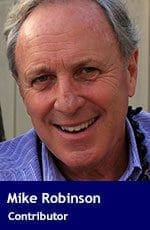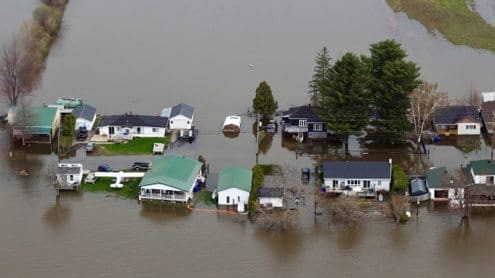 As the Virgin Dirigible Air super-shuttle settled slowly onto the Vancouver Pacific Spirit Regional Park Airport gantry, I got a great view of the Higher Mainland.
As the Virgin Dirigible Air super-shuttle settled slowly onto the Vancouver Pacific Spirit Regional Park Airport gantry, I got a great view of the Higher Mainland.
Predictably, Vancouver’s downtown condo towers sparkled under cloudy skies. Some things never change in Vancouver; others definitely have since my last visit in 2026. To begin with, way back in 2016, before the onset of the great Antarctic/Arctic melt (as it turns out, accurately predicted that year by climate scientist James Hansen), the Vancouver airport was located down in Richmond on the Fraser delta.
As we approached for today’s landing, I was struck by how far the Salish Sea extends to the east. Now the dense clusters of Chilliwack Beach condos sprawl all the way to Hope.
The old suburban communities of Richmond, Delta and South Surrey are now submerged, and form part of a greatly expanded Boundary Bay. To the north and west, Burnaby Mountain, Point Grey, and downtown form islands in the expanded Bowen chain of Howe Sound. West and North Vancouver have adjusted to the 10-metre increase in sea level by redesignating the Upper Levels highway as Marine Drive. It’s all kind of working out.
When I last visited Vancouver, the growing impacts of climate change were subsumed not by water, but by real estate prices and the profound unintended impacts of the federal government and Quebec’s Immigrant Investor Program. Basically Vancouver had become the largest Asian city outside of Asia.
With a starter bungalow in Dunbar trading at $20 million, no young families without oligarch parents could afford to live there. A mass migration to Vancouver Island and the Sunshine Coast left Vancouver without school children, healthcare professionals, lawyers, accountants and small business people. Only banks and a select group of restaurants and high-end retail outlets weathered the out-migration storm.
When the old Vancouver airport succumbed to the floodwaters, and the Richmond dikes failed, massive realty losses were sustained in the low-lying areas. Most of False Creek and Coal Harbour were soon to follow, and so began what is generally known as The Great Fuerdai Out-migration. Vancouver realty prices fell to unheard of lows as residents scrambled to unload high-and-dry investment homes to cover their losses on submerged assets.
Unbelievably, single-family detached homes in Vancouver’s westside were offered for less than $1 million. Some even sold for as little as $400,000.
The market started to stabilize at these prices as Vancouver Island and Sunshine Coast investors sailed over to acquire second homes as investment properties. As the waters inexorably rose in Richmond, the so-called Second Leaky Condo market caused a brief flurry of investment interest.
Climate change contrarians were especially interested in condos above the fifth storeys, and penthouse suites became known as island homes. This market was short-lived, as the waters continued to rise. One last ditch effort by canny realtors saw a Delta subdivision listed as Venice North – experience luxury canal living. It too capsized as the waters rose.
As matters turned out, when the new sea level stabilized, Burnaby Mountain, Point Grey, and Downtown Islands became desirable vacation home locations, but not zones of manufacturing or heavy industry. Their temperate climate now draws families for vacations that are made memorable by the local cultural festivals and arts and crafts traditions.
Some like Bard on the Beach are very long-standing, and predate the flood melt era. Others, like the Pacific Region International Summer Music Academy, bring young symphony musicians from around Canada to tour the Howe Sound island communities on a barge-mounted symphony stage.
The regional First Nations are also very active, marketing art and promoting the sustainable harvest of ocean foods. As the North Pacific waters have increasingly become home to the birds, fish and cetaceans of the southern latitudes, new harvests and menus are possible. The culinary arts are thriving as a result.
Because of the strict government internet controls, it is hard to compare our regional experience of the great melt with others. Presumably the loss of low-lying coastal zones has created similar impacts around the world.
Perhaps Wikileaks will reveal their stories. It seems hard to imagine that countries in the middle latitudes are sharing our good fortune.
Mike Robinson has been CEO of three Canadian NGOs: the Arctic Institute of North America, the Glenbow Museum and the Bill Reid Gallery. Mike has chaired the national boards of Friends of the Earth, the David Suzuki Foundation, and the Canadian Parks and Wilderness Society. In 2004, he became a Member of the Order of Canada.
The views, opinions and positions expressed by columnists and contributors are the author’s alone. They do not inherently or expressly reflect the views, opinions and/or positions of our publication.


